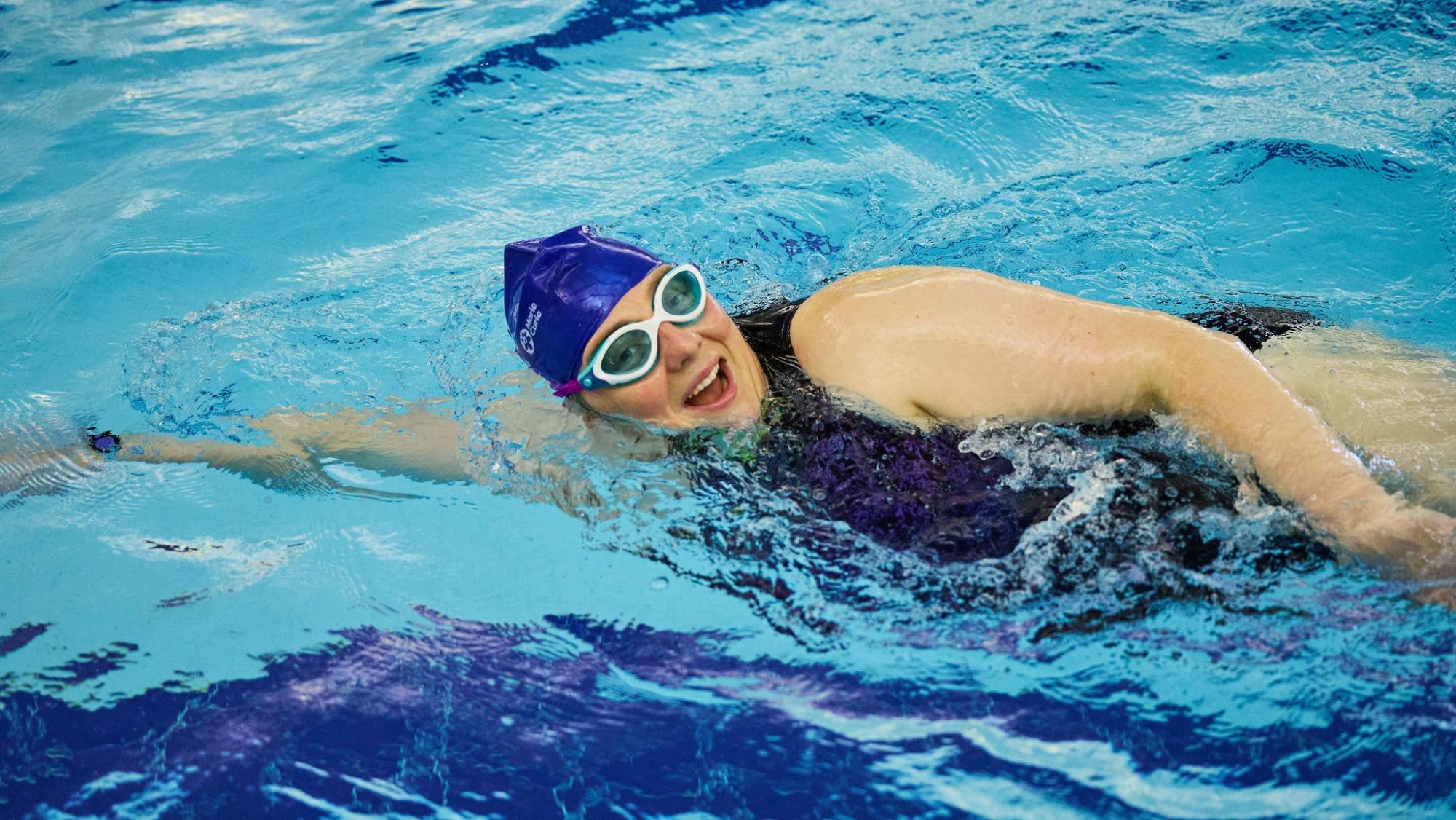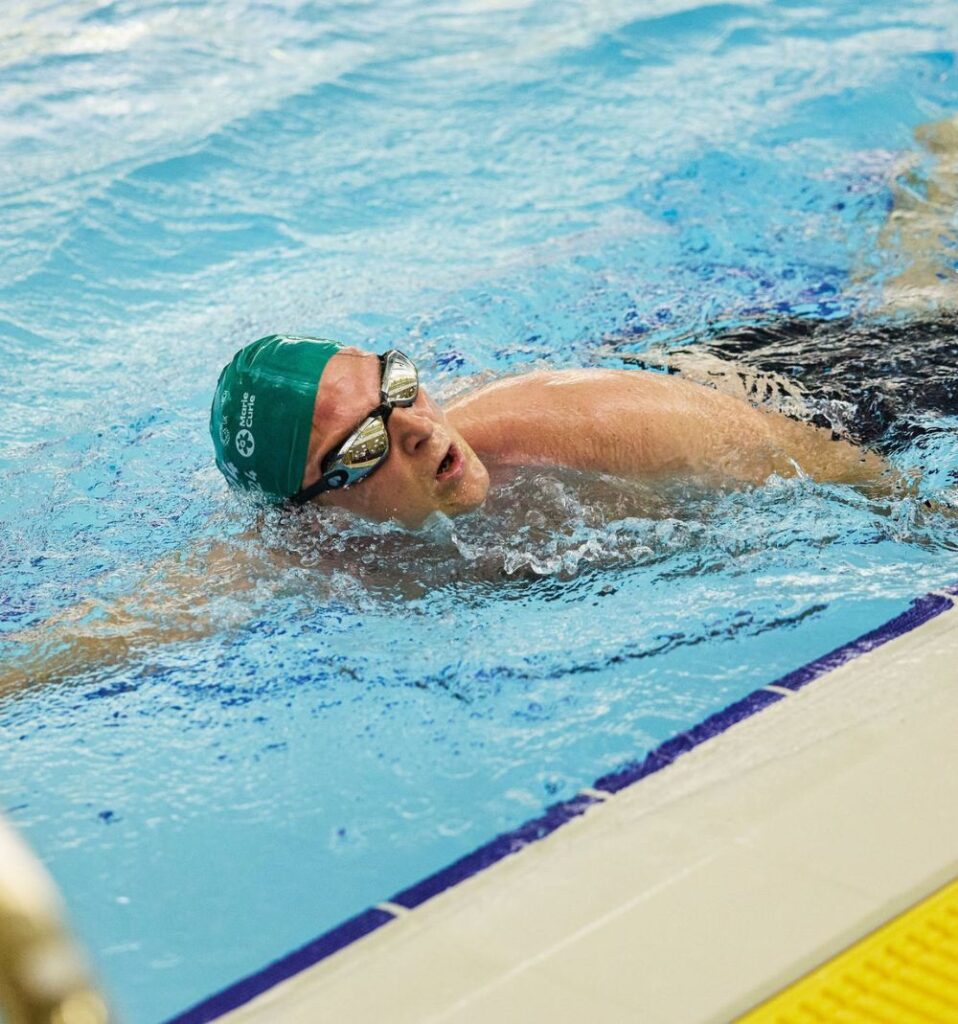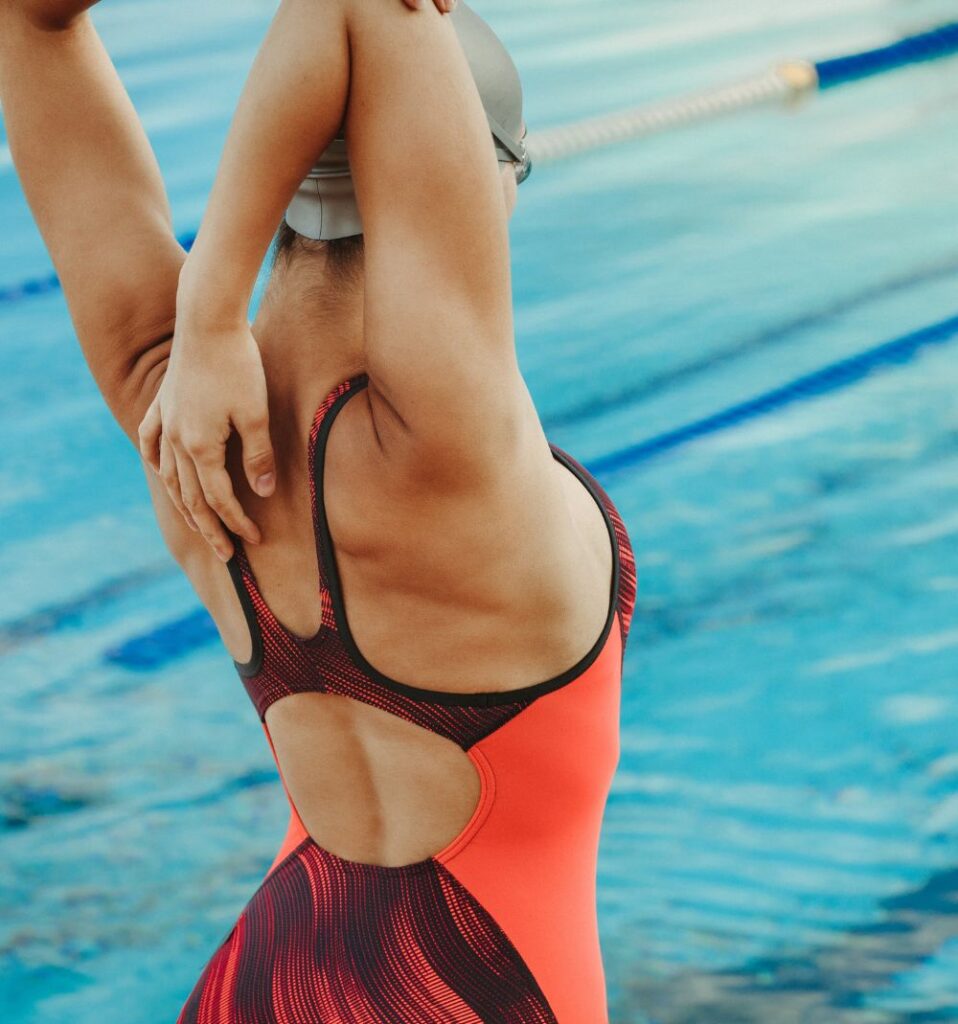
If you’re wondering how to get back into swimming, the answer is to start small, focus on technique, and build your confidence gradually. Begin with short, low-intensity swim sessions, paying attention to your body position and breathing. Then, gradually increase your distance and intensity over a few weeks. Adding structure through a simple training plan, swimming with a friend, or enrolling in swimming lessons with a qualified coach can help you progress faster, stay motivated, and reduce the risk of injury.
This blog will guide you through every step of getting back into swimming, from preparation and essential kit to rebuilding confidence with lessons, and staying consistent. It’ll help you know how to ease back into the pool, whether you’re returning after a short break or a longer pause.
At Bluecoat Sports, we make returning to the water enjoyable and achievable. Our 25m swimming pool is ideal for everything from casual swims to following a structured training plan. Our adult swimming lessons provide expert guidance for all skill levels, whether it’s your first swim back or you’re aiming to refine technique as a more advanced swimmer.
Explore our swimming pool or book adult swimming lessons to begin your journey today. If you’d like more information, our friendly staff will be happy to help – call us on 01403 247572.
Why get back into swimming?
Swimming offers unique benefits that make it one of the best ways to rebuild fitness and return to a healthy lifestyle:
- Low-impact, full-body workout: Unlike high-impact exercise, swimming is gentle on joints while strengthening your arms, legs, and core. It raises your heart rate, improves endurance, and tones muscles.
- Versatile for every skill level: Many swimmers use the pool for recovery after an injury, as part of cross-training, or to prepare for open water events. It can be tailored to your goals, whether that’s weight loss, building stamina, or technique practice.
- Builds skills and confidence: Regular swimming helps you improve stroke technique, develop better body position, and gain confidence in the water, whether you’re working on efficiency, speed, or simply feeling more at ease.
- Supports mental well-being: Many swimmers find that being in the water feels calming and enjoyable, offering a welcome break from daily routines. Once you establish a consistent schedule, swimming often becomes a positive habit that brings balance, energy, and a sense of accomplishment.
By combining fun, variety, and a range of lifestyle benefits, swimming is one of the most effective and enjoyable ways to stay active.
How to get back into swimming after a break
Returning to the pool after time away can feel daunting, but with the right approach, you can quickly rediscover your confidence and fitness. The key is preparation, pacing, and building consistency over time.
1. Prepare before you swim
A little preparation goes a long way to making your first swim back safe and enjoyable:
- Know your fitness levels: After a break, start at a pace that feels manageable and gradually increase it over time. If you’ve had an injury or health concerns, it’s sensible to check in with your GP first.
- Get the right essentials: A good swimming costume, a swim cap, goggles, a towel, and a water bottle will make your session more comfortable. Simple training aids, such as a pull buoy or kickboard, can also help you refine stroke technique.
- Choose a safe pool: Opt for a pool with lifeguards and good facilities so you can train with peace of mind.
- Take a friend or swim buddy: If you’re unsure about swimming alone at first, having someone with you can make the experience feel more comfortable and give you extra confidence in the water.
- Know pool etiquette: Many swimmers feel nervous after time away, but remembering the basics helps everyone enjoy their swim session. Sports centres should have their own list of rules, so make sure you familiarise yourself with them in advance.
- Warm up properly: A few minutes of stretches before entering the water will help loosen your muscles and reduce the risk of injury.

Taking these steps ensures you’re ready to start swimming again with confidence.
2. Take it step by step
The most important thing when swimming after a break is to pace yourself. Trying to match old distances or swim sets too soon can lead to frustration or even injury. Instead:
- Begin with short, low-intensity sessions.
- Focus on body position, relaxed breathing, and smooth movement through the water.
- Keep your head steady and refine your stroke technique gradually.
- Use rest between sets to manage your heart rate and build endurance.
After a few weeks, many swimmers notice their bodies adapting and fitness improving. From there, you can add variety, such as interval-based swim workouts, longer distances, or training aids for more advanced swimmers.
3. Build confidence with lessons
For many people, the challenge isn’t just physical; it’s also about confidence. Structured swimming lessons are a great way to ease back into the sport under the guidance of a coach. At Bluecoat Sports, our adult swimming lessons and courses are tailored to suit all levels, from beginners to those at intermediate and advanced levels looking to improve their performance.
We also offer 1:1 swimming lessons for adults, with 30-minute sessions designed around your goals and ability, as well as running our Hints ‘N’ Tips adult swim clinic, where our Swim Academy instructors are available poolside to offer advice. Hints ‘N’ Tips is suitable for swimmers who are able to complete four consecutive lengths in the pool.
Visit our pool timetable for more information.
4. Stay motivated and make it a habit
Consistency is the most crucial factor in rebuilding swim fitness. Some ways to stay on track include:
- Set realistic goals: Think about what you’d like to achieve, whether that’s swimming once a week or simply enjoying being back in the pool. Having a goal in mind is something positive to work towards.
- Find a swim buddy: Training with a friend can help keep you motivated and make the pool more enjoyable.
- Track your progress: Record your distances, times, and heart rates to monitor your fitness improvement over time.
- Mix up your sessions: Alternate between focusing on endurance, technique practice, and recovery swims to keep things fresh.
- Enjoy the process: Celebrate small wins and remember that swimming should be fun and beneficial for your health.
With a consistent schedule, you’ll soon find yourself back in swimming shape and ready to take on new challenges.
Don’t forget nutrition and recovery
When you’re working on how to get back into swimming, it’s important to remember that what you do outside the pool is just as valuable as your swim sessions. Staying hydrated, eating balanced meals that include protein and carbohydrates, and providing your body with the right fuel will help improve endurance and support your muscles during training.
Equally important is recovery, as it is key to building long-term swim fitness. Allow time for rest, gentle stretching, and light activity between sessions to help your body adapt and prevent injury. By focusing on both nutrition and recovery, you’ll find it easier to stay consistent and make progress.

Summary
Getting back into swimming doesn’t have to feel overwhelming. By preparing properly, starting with short and manageable swim sessions, and focusing on good technique rather than distance, you can gradually rebuild your fitness and help avoid injury. Over a few weeks, your confidence and stamina should improve, especially if you add variety with swim workouts, use simple training aids, or take swimming lessons with a qualified coach.
Staying motivated is easier with realistic goals, a swim buddy, and a reminder that swimming should be fun as well as beneficial for your health. Don’t forget the importance of nutrition and recovery too – hydrating, fuelling your body well, and allowing time for rest all play a big part in your progress.
With a consistent schedule, you could soon find yourself back in the pool and enjoying swimming again.
Book a swimming class at Bluecoat Sports
Our swimming pool at Bluecoat Sports, Christ’s Hospital, Horsham, offers the perfect environment for all types of swimmers. Whether you’re dropping in for a gentle workout, following a structured training plan, or enjoying training with a friend, our facilities can help you progress.
For those who want extra support, our adult swimming lessons are ideal. Led by experienced coaches, they help you refine technique, build endurance, and re-establish confidence in the pool, whether it’s your first swim back or you’re aiming for more advanced swim sets.
For more information about using our swimming pool facilities, including membership options, please don’t hesitate to contact us.
Getting back into swimming FAQ
What is the best way to get back into swimming after a long break?
The best way to get back into swimming is to start with short, low-intensity swim sessions that let your body adjust gradually. Focus on body position, breathing, and stroke technique rather than trying to swim long distances straight away. Choosing a safe pool with lifeguards and, if possible, working with a trainer or instructor can give you extra confidence and help refine your technique. Over a few weeks, you can gradually increase your training plan with longer swim sets, which will help build your swim fitness safely and reduce the risk of injury.
How many times a week should I swim to get fit again?
When you’re looking to get back into swimming, any number of swim sessions per week is a positive step for your fitness. Many swimmers find that 2–3 sessions can be a good target for building endurance, refining technique, and giving muscles time to rest, but the right number depends on your lifestyle. The key is to choose a consistent schedule that works for you, whether that’s once a week or more frequently. As your confidence and fitness grow, you can gradually build up your training plan with longer or more structured swim workouts.
Can swimming help with weight loss and toning?
Yes, swimming is one of the best full-body workouts for weight loss and toning. It raises your heart rate, strengthens major muscles, and improves endurance, all while being gentle on the joints. By mixing up your swim workouts with different swim sets and varying intensity, you’ll be able to burn more calories and hopefully continue to see results. Over time, you’ll build both fitness and technique while maintaining a fun and sustainable form of exercise.
What should I do if I feel nervous about swimming again?
If you’re nervous about swimming after a break, remember that many swimmers feel the same way when they return to the pool. Start slowly with shorter training sessions to rebuild your confidence and bring a friend along for support. Joining adult swimming lessons with a qualified coach can also help you refine your technique and feel more comfortable. The most important thing is to take it step by step and enjoy being back in the pool.